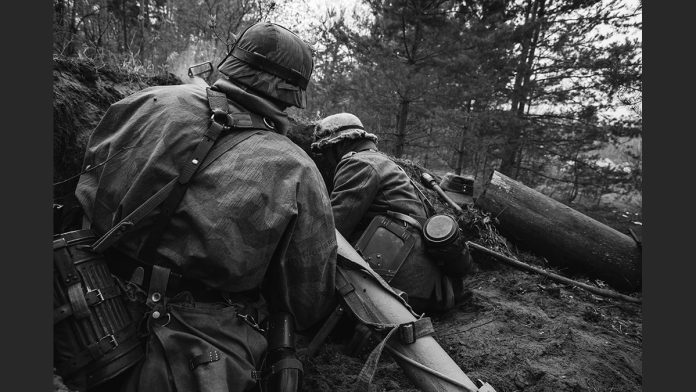KUALA LUMPUR – Zafrani Mohd Arifin quit his job as a bank officer after 23 years to devote more time to his lifelong interest in teaching the public about military history, in particular World War II (WWII) and the first Japanese force landing in Kelantan.
The fact that 52-year-old Zafrani is able to recount historical events of a past war based on sources he gathered from the field, interviews, and history books he studied makes him a point of reference for various parties.
It is therefore not surprising that he is frequently invited by museums, schools, and universities to take part in exhibitions and provide explanations of the historical events that occurred in Kelantan, in addition to being a reference for researchers and foreign tourists.
Zafrani, when contacted by Bernama, said his interest in military history began in the early 1980s, when he watched a lot of television series and movies about WWII, like Combat, Pearl Harbor, and Baa Baa Black Sheep.
More so, he added, if a significant military conflict had a direct impact on the country to the extent that many people died and endured hardship.
“When it (the war) occurred in our environment and affected our family, we would feel more connected to the event. So, there was a sense of curiosity and a desire to learn more,” said Zafrani, who now works as a tour guide.
In order to expand his knowledge, Zafrani said he read a lot of war books, both locally and internationally published, as well as visited historical sites related to independence and WWII in the country.
Among the WWII relics that Zafrani and his crew discovered in Kelantan were British military ammunition shell casings, military webbing equipment, British military camp wells, and three craters resulting from Japanese bombings in Machang.
“The recovered military items were also donated to the Bank Kerapu War Museum in Kota Bharu as historical evidence of the war and for public display,” he said.
To help spread knowledge of the important account of WWII in the country, Zafrani said he is now actively involved in writing and translating books related to the military war, among them The War in Malaya (1949), written by the British Army Commander, Lieutenant General Arthur Percival.
The Kota Bharu native said the history associated with WWII and the landing of the Japanese army in Kelantan has great potential as a world-class tourism attraction, but so far the authorities have not done enough to promote it.
“For example, Pearl Harbour has become one of the most popular tourist destinations in the world, even though the U.S. ship that was bombed by the Japanese army is no longer there, and the Siam-Burma Death Railway, or the Death Railway, is constantly visited by tourists, despite the fact that it is only a bridge.
“Tourists want to see for themselves and experience the events that happened there. We also have it in Kelantan, for example, Kuala Pak Amat Beach, the first landing site of the Japanese forces in Malaya on Dec 8, 1941, about an hour before they bombed Pearl Harbour.
“This is just as important as the history recorded by Pearl Harbour. But why don’t people come here?We should be on the same level, which will also contribute to the country’s economy,” he said.
On the importance of learning the WWII history of the country, Zafrani said it could help foster a sense of nationalism among the people and remind them how difficult it was to free the country from the shackles of colonial rule.
“It will also make more people realise how important it is to protect our nation’s sovereignty and appreciate the sacrifices made by past fighters who were willing to put their lives on the line for the country’s independence,” he said. – Bernama













